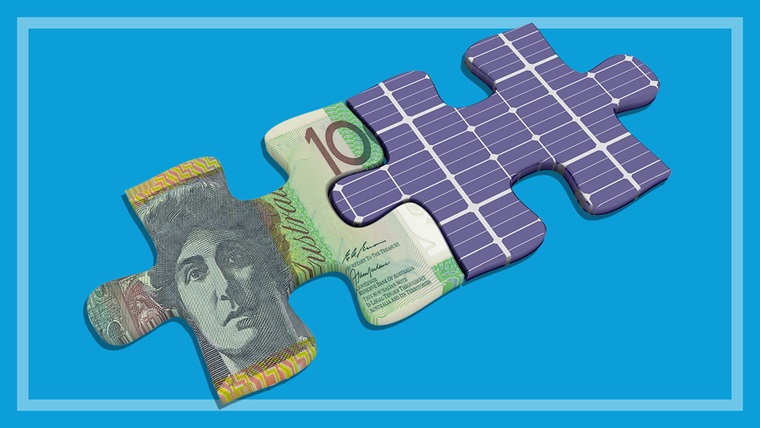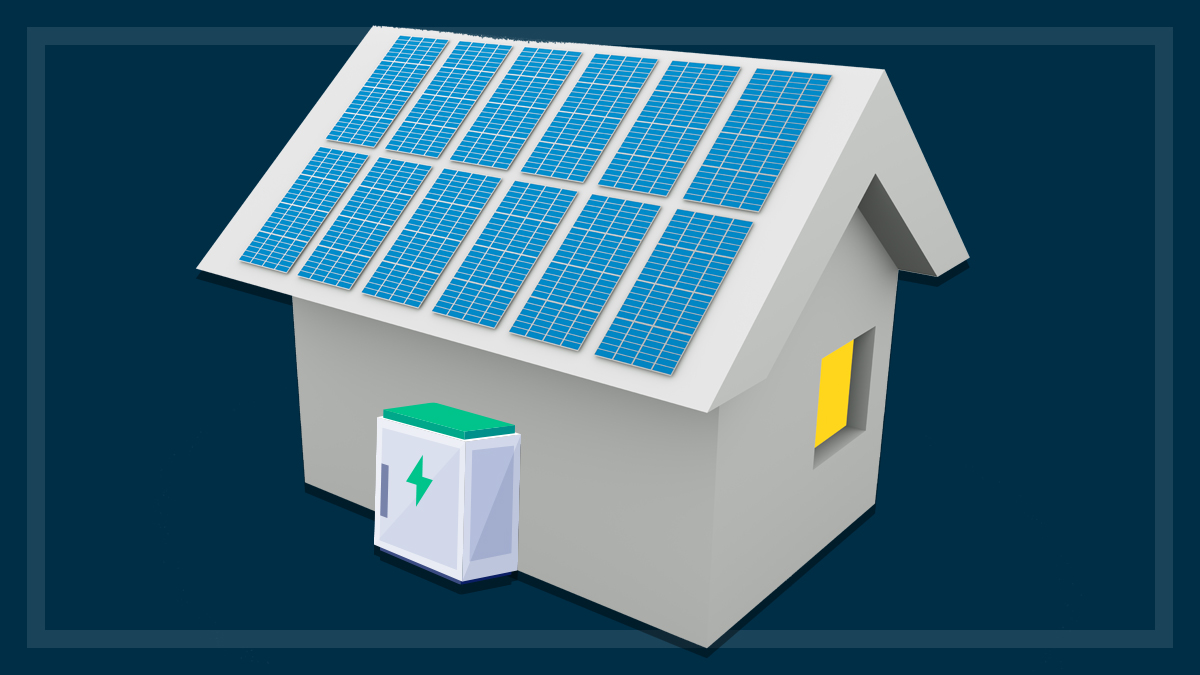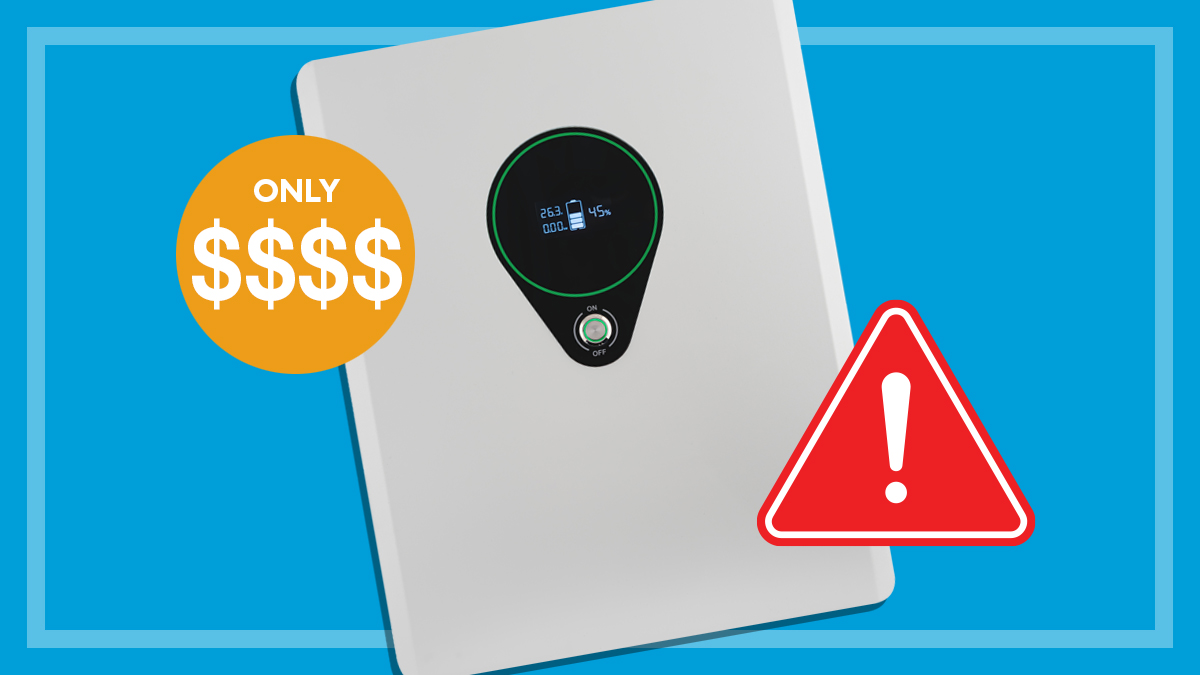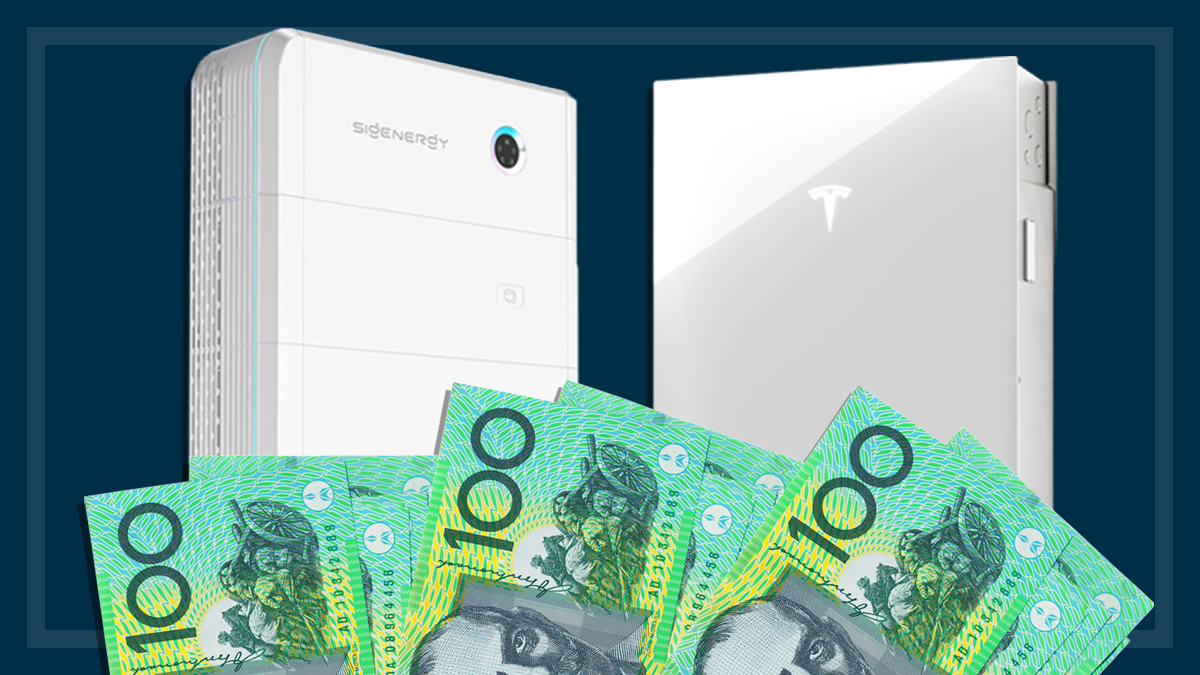Get our independent lab tests, expert reviews and honest advice.
The impact of energy-efficient appliances
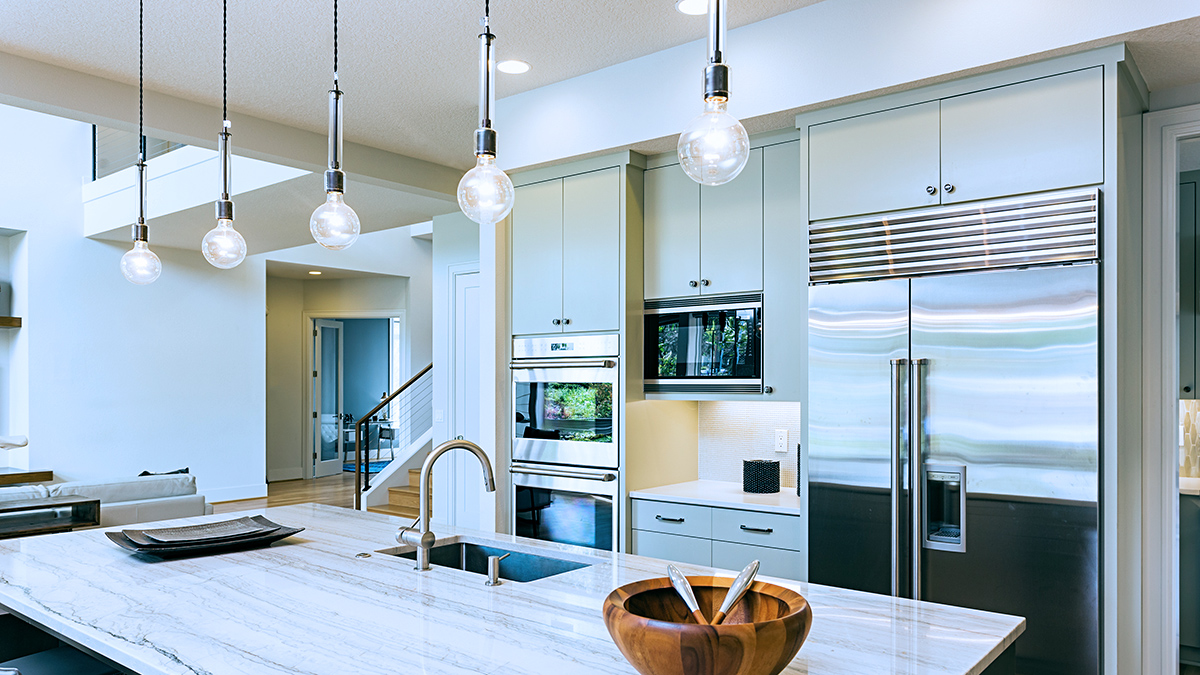
Aside from switching to solar, finding a new power plan or experimenting with a pre-20th century lifestyle, you can run a ‘greener’ home and save money on energy bills by choosing the right appliances and using them in a more efficient manner.
On this page:
- Where does your energy go?
- Heating and cooling (40%)
- Water heating (23%)
- Other appliances – washers, dryers, TVs and computers (14%)
- Fridges and freezers (8%)
- Lighting (7%)
- Cooking (5%)
- Standby power (3%)
- Total energy savings
Where does your energy go?
It’s helpful to know which parts of your home use the most power so you can see where you may be able to make the most savings.
A typical Australian household now spends around $2330 on electricity every year. Everyone’s usage is different of course, but energy use in your home breaks down like this:
- heating and cooling – 40%
- water heating – 23%
- other appliances, e.g. laundry, TVs and computers – 14%
- fridges and freezers – 8%
- lighting – 7%
- cooking – 5%
- standby power – 3%.
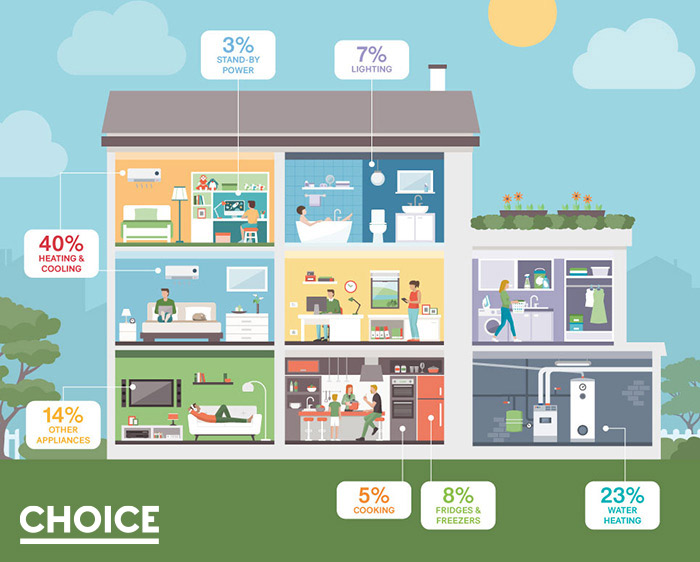
Heating and cooling (40%)
This is where we use the bulk of our energy, so it stands to reason that it’s an area where we can make big savings.
Before you consider heating and cooling appliances, make sure your home is as thermally efficient as possible by:
- installing ceiling, underfloor and wall insulation
- sealing gaps around doors, windows and chimneys to stop draughts
- closing internal doors so you’re only heating and cooling rooms you’re actually in
- using passive heating and cooling (opening the windows to let the breeze in).
These steps help reduce your dependence on heating and cooling appliances. Combining them with energy-efficient appliances will help you save significantly on your power bill.
Air conditioners
The most efficient heating and cooling technology for most homes is a reverse-cycle air conditioner. But they’re still an energy intensive appliance so use them sparingly – every 1℃ adjustment means about a 10% difference in energy consumption. Set your thermostat as high as you’re comfortable in summer, and as low as you’re comfortable in winter.
Size matters, too – our air conditioner buying guide can help you choose the right size air conditioner for your needs. Reverse-cycle air conditioners are relatively efficient, but there’s a big difference in running costs between models.
| Cheapest to run | Most expensive to run |
|---|---|
|
Hitachi RAK-DJ50PCAT RRP: $1530 Annual running cost: $375 |
Fujitsu AUTH18KVLA RRP: $4669 Annual running cost: $536 |
Note: Based on delivering 3000kWh cooling and 3000kWh heating per year at maximum capacity*
Ceiling fans
A ceiling fan can help reduce your energy bill by reducing your dependency on reverse-cycle air conditioners. They also make air conditioners more efficient by circulating the hot or cold air.
When used in ‘winter mode’, where the ceiling fan pushes warm air down from the ceiling area to the living area without creating a breeze, you’ll also find your existing heater doesn’t have to work as hard to keep you warm, reducing your electricity bill even further.
While all ceiling fans are generally a great energy-efficient solution, fans with a direct current (DC) motor deliver even greater efficiency than fans with an alternate current (AC) motor, further lowering running costs. And DC models have up to seven settings, giving you more control over air movement than most AC models, which have only three settings.
| Cheapest to run | Most expensive to run |
|---|---|
|
Aeratron AE2+ RRP: $899 Annual running cost: $11 |
ThreeSixty Arumi V2 RRP: $299 Annual running cost: $47 |
| Difference in annual running costs: $36 |
Space heaters
Electric space heaters are cheaper to buy, but far more expensive to run than a reverse-cycle air conditioner. You can move them from room to room, and they’re great for heating smaller spaces. Our space heater buying guide will help you pick the right type of space heater for your needs. But factor in their high energy usage, whichever type you choose.
| Cheapest to run | Most expensive to run |
|---|---|
|
Kogan KAOILHTB24A RRP: $129 Annual running cost: $153 |
Omega Altise AALTURASB RRP: $179 Annual running cost: $368 |
| Difference in annual running costs: $165 |
Water heating (23%)
After climate control, heating water will use the most energy in your home. There’s the daunting choice of which type of hot water service you need – electric, gas, solar, heat pump or instantaneous system. All have their good and bad points, so check out our hot water service buying guide to decide on the right type for you.
Regardless of the type you choose, the easiest way to reduce energy used in water heating is to reduce your use of hot water. The good news is it’s not hard.
The easiest way to reduce energy used in water heating is to reduce your use of hot water
Don’t use hot water when cold will do – such as for washing your hands, filling the kettle, or doing the laundry. Have shorter showers, and install a water-saving shower head. Insulating your hot water pipes is cheap and easy, and will minimise heat loss in transit.
If possible, have your hot water service placed close to the bathroom and laundry. This minimises the amount of hot water left that will be left to cool in long pipe runs, and the hot water gets to you sooner when you turn on the tap.
Recently put solar panels on the roof? Ditch the gas on demand hot water service in favour of an inverter electric water heater.
Other appliances – washers, dryers, TVs and computers (14%)
Washing machines are an essential appliance, but in our modern world, home entertainment gear seems just as vital. Washing machines, dryers, TVs and gaming consoles are all power-hungry appliances. It’s worth thinking about the energy consumption when selecting your next big screen TV, Xbox or soundbar, or when choosing a washing machine.
Washing machines
They usually cost more to buy, but most front-loader washing machines use less power, water and detergent than top loaders. Whichever washer you pick, washing in cold water will usually get your clothes as clean as a hot wash, without the energy cost of water heating.
Also remember that one full-capacity load will use less energy than two half-capacity loads, so try to wait till you can fill your machine. Our washing machine reviews can help you find the most energy-efficient models.
| Cheapest to run | Most expensive to run |
|---|---|
|
Asko W2084CW (front loader) RRP: $1999 Annual running cost: $48 |
Samsung WA90R6350BV (top loader) RRP: $949 Annual running cost: $201 |
| Difference in annual running costs: $153 |
Clothes dryers
The best clothes dryer is the sun and it costs nothing to run, so line dry your clothes wherever possible. That’s not always an option though, so for many of us a clothes dryer is an essential appliance.
There are different types of dryers, and they vary both in cost and energy efficiency. A good heat pump dryer will use as little as a third of the energy of a vented dryer, but you need to weigh that up against significantly higher purchase prices.
Our clothes dryer buying guide can help you work out whether a heat pump or a vented dryer is the best option.
| Cheapest to run | Most expensive to run |
|---|---|
|
Samsung DV80T5420AB (heat pump) RRP: $1649 Annual running cost: $55 |
Fisher & Paykel DE7060G2 (vented) RRP: $659 Annual running cost: $219 |
| Difference in annual running costs: $164 |
Dishwashers
Dishwashers aren’t just a labour-saving device, they’re also more energy- and water-efficient than washing by hand. Because like with your laundry, most of the energy used in doing the dishes goes into heating the wash water, and dishwashers use a fraction of the water of washing in the kitchen sink.
Drive your dishwashing dollar further by waiting till your dishwasher’s full before running it, and try out your eco mode with a good quality detergent. You may find it washes just as well while using less energy.
Although most modern dishwashers do a good job of getting your plates clean, our dishwasher reviews show there are big differences in energy use between them all.
| Cheapest to run | Most expensive to run |
|---|---|
|
Inalto IDW604S RRP: $499 Annual running cost: $99 |
Haier HDW13V1W1 RRP: $629 Annual running cost: $211 |
| Difference in annual running costs: $112 |
Televisions
Modern LCD televisions are far more energy-efficient than older plasma screens, but they’re still power-hungry. You can reduce their running cost by not leaving the TV on if you’re not watching it. And if you just want some background noise, use the radio instead.
The energy star figure can be a handy way to quickly see how it compares with other TVs. But be sure to compare the same size TV. A 32-inch TV with a 3-star rating will still be using much less energy than a 65-inch TV with a 5-star rating.
If you just want some background noise, use the radio instead
Your AV gear is also a cluster of standby power consumers – chances are they’re all in the same power socket, so it’s easy to turn the whole lot off at the wall.
Personal video recorders (PVRs) used to be the best way to record and watch a live broadcast TV show at a later time, but were also one of the biggest energy users and couldn’t be included in the ‘turn everything off when not watching TV’ rule. With the increased use of streaming applications with video on demand, such as Netflix, Stan, Apple TV and iView, you can now just turn on the TV and watch what you want when you want.
| Cheapest to run | Most expensive to run |
|---|---|
|
Ffalcon FF65RU62 RRP: $599 Annual running cost: $88 |
TCL 65C845 RRP: $1795 Annual running cost: $325 |
| Difference in annual running costs: $237 |
Computers
Computers are another essential in the modern home. While not as power-hungry as an air conditioner, for example, if you have several desktop computers that stay on 24/7, energy consumption will add up.
Power use varies between models, so consider what you’ll be using it for and buy the appropriate desktop or laptop for your needs. If you only surf the net and work on the odd spreadsheet then you don’t need a high-performance energy guzzler.
Also remember your peripherals – computer monitors can draw as much power as an extra TV, and consider the standby power needs of printers, smart speakers and other accessories.
Fridges and freezers (8%)
While you can’t turn them off, there’s a lot you can do to keep your fridge running at its most energy-efficient.
- Adjust your fridge to 3°C and your freezer to -18°C for the best balance between food safety and energy efficiency.
- Keep door opening to a minimum by planning ahead when cooking.
- Full fridges have a higher thermal mass, so keeping it well stocked means your compressor won’t cycle as often, which will reduce energy use a little.
Bigger fridges use more energy because of the larger space they have to cool. Choose the right fridge for your household with our fridge buying guide.
Deep freezers are great if you buy in bulk, but they use a lot of energy, so ask yourself if you really need one. That old fridge you’re keeping in the garage for overflow? It could be costing you a hundred dollars or more a year in electricity and contributing to your carbon footprint, so keep it turned off till you absolutely need it.
| Cheapest to run | Most expensive to run |
|---|---|
|
Westinghouse WBE5300SC 496L RRP: $2199 Annual running cost: $124 |
Hisense HRSBS519B 519L RRP: $1199 Annual running cost: $198 |
| Difference in annual running costs: $74 |
Lighting (7%)
Old incandescent and halogen bulbs use a lot of energy compared to LEDs. Switching your bulbs can realise large energy savings almost immediately. A typical household lit with 100W incandescent bulbs will use nearly 700kWh or about $265 in electricity every year for lighting – but you can double that if your home is lit with halogen downlights, which will see your total energy consumption for lighting climb to around 1400kWh, or $560 a year.
Although halogens are typically lower wattage (between 35 and 50W) than incandescent bulbs, you typically need multiple downlights per room and each downlight also requires a 10W transformer.
Switching your bulbs can realise large energy savings almost immediately
Switching from 100W incandescent to 14W LED lightbulbs gives you roughly the same amount of light, but reduces your energy consumption immediately and could save you around $225 per year.
Smart LED lights also let you automate switching on and off, which you can use to save energy. For example, you can set the lights to all turn on or off at a certain time of the day, or in just parts of the house that you use in the morning or evening.
Make further energy savings by:
- opening the curtains to use natural light where possible
- turning the light off when you leave the room
- installing sensor lights which only turn on when you approach.
| Cheapest to run | Most expensive to run |
|---|---|
|
14W LED globes Annual running cost: $37 |
100W incandescent globes Annual running cost: $263 |
| Difference in annual running costs: $225 |
How do lumens, incandescent wattages and LED wattages relate? Here’s a rough guide:
| Light output | Incandescent | LED | Suitable for |
|---|---|---|---|
| 420lm | 40W | 6W | Table or floor lamps |
| 800lm | 60W | 8–10W | Lighting a small room |
| 930lm | 75W | 10.5W | Lighting a medium-sized room |
| 1300lm | 100W | 13W | Lighting a large room or workspace requiring bright light |
| 2000lm | 150W+ | 18–20W | Outdoors or specialist applications |
Cooking (5%)
We recommend using our reviews to choose energy-efficient kitchen appliances, but the way you use your appliances can also have a big impact on your power consumption.
Smaller appliances generally use less power than larger ones, so use the microwave instead of the oven and the toaster instead of the grill.
Boiling the kettle will use about the same amount of electricity regardless of the model of electric kettle you choose. But you can make significant savings by only boiling what you need – there’s no point filling your kettle for a single cup.
Cooktops also seem to be fairly similar on power usage, but choosing the right size and type of saucepan for a given burner or element on your stove and using lids on pots and pans can help keep energy consumption down.
| Cheapest to run | Most expensive to run |
|---|---|
|
Haier HWO60S7MB4 RRP: $659 Annual running cost: $37 |
Fisher & Paykel OB90S9MEPX3 RRP: $4699 Annual running cost: $78 |
| Difference in annual running costs: $41 |
| Cheapest to run | Most expensive to run |
|---|---|
|
Euromaid ECCK64 RRP: $439 Annual running cost: $44 |
Fisher & Paykel CE754DTB1 RRP: $1599 Annual running cost: $72 |
| Difference in annual running costs: $28 |
| Cheapest to run | Most expensive to run |
|---|---|
|
Ikea VÄRMD AM820A8Y-SOFF40 RRP: $299 Annual running cost: $11 |
LG Smart Inverter MS5696OMBS RRP: $469 Annual running cost: $23 |
| Difference in annual running costs: $12 |
Standby power (3%)
Just because an appliance is off doesn’t mean it’s not drawing power. Appliances may still be using power hour in standby mode to run internal clocks, or to keep the sensors active to respond to a remote.
The average Australian household uses a staggering 81.8 watts of standby power per hour. That’s 717kWh or around $285 every year, and this is for appliances you might think are not in use.
Just because an appliance is off doesn’t mean it’s not drawing power
The good news is you can reduce your standby power consumption easily by turning appliances off at the wall wherever possible. A power board or surge protector with individual switches can make this easier if you need to leave some turned on for any reason, while also giving you the option to flick a single switch, turning everything off for instant savings.
And finally, try to get in the habit of turning your phone charger off at the wall when you put your phone in your bag or pocket.
Total energy savings
You can save energy in your home by choosing more energy-efficient appliances over energy guzzlers, switching them off when not in use, and by using them in more efficient ways (for example doing full loads rather than half loads in your washer).
It’s impossible to put an exact dollar figure on how much you can save, but the difference in energy use for the select appliances in this article add up to $1408 a year. And as we mentioned earlier, home appliances could be costing you on average $285 a year for standing idly by.
So even without factoring in ways you could use your appliances more efficiently, and using those figures as a guide, you’re looking at an extra $1693 a year in your pocket. And of course, any reduction in energy use is not just good for your wallet, but it’s also good for the planet.
*Electricity costs calculated using $0.40 per kWh as an estimate. This will vary depending on your own electricity costs.



